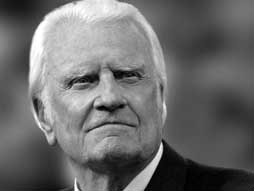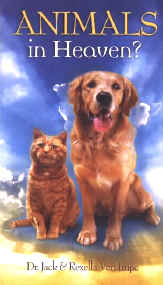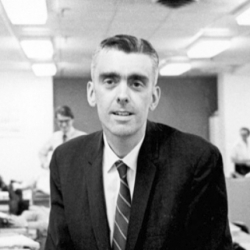It has taken me months, but yesterday I was able to finally finish watching the last 18 minutes of a slightly more than 26-minute TED conference talk titled “On technology and faith” that a then 79-year-old Billy Graham gave in California in February 1998. If you are interested, you can watch it here at: http://www.ted.com/talks/billy_graham_on_technology_faith_and_suffering#t-399663
The talk, like many Graham has given over his long life, is remarkable for any number of reasons, and delivered with his usual homespun, folksy North Carolina wisdom. If it’s not too much of a stretch, I’ve long considered the Southern Baptist preacher with a worldwide appeal transcending Christian denominationalism, and even extending to non-Christian religions, as somewhat analogous to a living saint (Catholics don’t have living saints, much less Protestant ones, but grant me a moment of literary licence.)
Graham, of course, would never think of himself that way either because he well recognizes the sinful and depraved nature of man, something we Catholics also recognize, although not as total depravity in the Calvinist sense. Interestingly, Graham in that talk more than 17 years ago, was talking about end of life issues and getting ready to go home and meet his maker. Apparently God still isn’t quite ready for Billy since he’s now 96. While he’s not well enough these days to be giving a TED or any other public talk in all likelihood, methinks God leaves people like Billy Graham and Mother Angelica, a similar age to Billy, and founder of the worldwide Catholic Eternal Word Television Network (EWTN) among us longer than we might expect as a reminder of what a shining witness is, even long after they can make public appearances. The very fact of their lives is their Christian witness.
Saint Paul the Apostle, describing the human enigma in his Letter to the Romans, wrote: “My own actions bewilder me; what I do is not what I wish to do, but something which I hate. Why then, if what I do is something I have no wish to do, I thereby admit that the Law [of God] is worthy of all honor; meanwhile, my action does not come from me, but from the sinful principle that dwells in me.
“Of this I am certain, that no principle of good dwells in me, that is, in my natural self; praiseworthy intentions are always ready at hand, but I cannot find my way to perform them; it is not the good my will prefers, but the evil my will disapproves that I find myself doing.
“And if what I do is something I have not the will to do, it cannot be I that bring it about; it must be the sinful principle that dwells in me. This, then, is what I find about the Law [of God], that evil is close at my side, when my will is to do what is praiseworthy. Inwardly, I applaud God’s disposition, but I observe another disposition in my lower self, which raises war against the disposition of my [heart], and so I am handed over as a captive to that disposition towards sin which my lower self contains.”
G.K. Chesterton, one of the four greats, at least to my mind, of Edwardian letters (the others on my Dead White European Males – or DWEM – literary canon shortlist being Hilaire Belloc, H.G. Wells and George Bernard Shaw) was asked in 1907 by The Times of London to write an article on the theme, “What’s Wrong with the World?” Chesterton’s pithy reply was: “Dear Sirs, I am. Sincerely yours, G. K. Chesterton.”
Influenced by his wife Frances, he first became an Anglican and later converted to Roman Catholicism in 1922. Chesterton lived from 1874 to 1936. This is the convert to Catholicism after all who wrote: “[W]e should thank God for beer and Burgundy by not drinking too much of them.” Privately, he joked, “One pint is enough, two pints is one too many, three pints isn’t half enough.” (https://soundingsjohnbarker.wordpress.com/2015/03/24/catholicism-is-a-big-tent-with-an-eclectic-communion-of-saints-will-there-be-room-for-g-k-chesterton-some-day/)
In September 2013, Bishop Peter Doyle, bishop of the Diocese of Northampton, appointed Canon John Udris, a priest of the diocese and currently spiritual director at St Mary’s College, Oscott, to undertake a fact-finding exercise on his behalf into whether a cause for Chesterton’s canonization should be opened. Udris in due course will submit a dossier to the bishop on whether to open the cause for Chesterton’s canonization.
As Udris told the Catholic Herald in an interview in March 2014, Chesterton, one of the most important Catholic writers and apologists for the faith of the 20th century, is “potentially a huge model” for the Church who “breaks the mould of conventional holiness.”
Udris noted Chesterton, a married layman, was not conventionally devout and could show Catholics “you don’t have to say your rosary every five minutes to be holy.” The first stages of a canonization cause include collecting evidence of heroic virtue.
Instead, Udris suggested, “Chesterton’s holiness could be found in his humour, his charity and his humility.” His defence of the faith in particular, Udris said, “was a model for Catholics.”
Dale Ahlquist, president of the American Chesterton Society, and a former Baptist who converted to Catholicism, said in 2013 the idea that someone like Chesterton could be a saint attracted him to the Catholic Church: “The fact that a 300-pound, cigar-smoking journalist might be a saint of the Catholic Church made me understand what the communion of saints is all about. They’re not just one particular type of person.”
Exactly so. Did Chesterton lead a perfect life? Hardly. His excessive enjoyment of food and drink exhibited a distinct lack of temperance, the cardinal moral virtue “that moderates the attraction of pleasures and provides balance in the use of created goods,” as the Catechism of the Catholic Church puts it. As well, some of his utterances, contemporaneous with his times, clearly sound anti-Semitic to the modern ear. There should be no whitewashing of Chesterton’s life.
Saints, we are reminded time and again, lead holy, but not always conventionally holy, and never perfect lives. They were human beings before they were saints.
Another who has lived a life of Christian witness, in my opinion, although many Catholics may not share it, is Jack Van Impe, who at 84 is a bit of a youngster compared to Billy Graham, where Van Impe got his start at the age of 17 playing the accordion before he started preaching.
Van Impe, an American televangelist best known for his long-running half-hour weekly television show Jack Van Impe Presents, an eschatological commentary on the news of the week, is a premillennial dispensationalist in his interpretation of Bible prophecy, positing a pretribulation secret Rapture – the belief that Christians will be taken up from earth in a sudden, silent removal of true believers by God prior to a time of tribulation and the Second Coming. For this Pre-Tribbers rely heavily on Saint Paul and 1 Thessalonians: “For the Lord himself will descend from heaven with a cry of command, with the archangel’s call, and with the sound of the trumpet of God. And the dead in Christ will rise first; then we who are alive, who are left, shall be caught up together with them in the clouds to meet the Lord in the air; and so we shall always be with the Lord.”
That, to be clear, is not a Catholic reading of 1 Thessalonians or Catholic theology, as the passage describes a very loud and public event, not a secret Rapture. We do, however, believe in a future Antichrist, and a coming trial and time of apostasy before the Second Coming. While some of the Apostolic Fathers of the early church, including Papias, Justin Martyr, Irenaeus, Tertullian, Hippolytus, Methodius, Commodianus and Lactanitus – were premillennialists who believed that Christ’s Second Coming would lead to a visible, earthly reign – the pretribulational Rapture espoused by Van Impe, which is premised on the notion that Christ sought to establish a material and earthly kingdom, but the Jews rejected him, so the Church by necessity is a parenthetical insert into history, created as a result of Jews rejecting Christ, resulting in the existence of two people of God: the Jews, the “earthly” people, and the Christians, the “heavenly” people, is all alien to both Catholic theology and even the premillennialist views of some of the early Apostolic Fathers.
The premillennial dispensationalism that Van Impe adheres to is of much more recent vintage and is for the most part the creation of John Nelson Darby, an Anglo-Irish curate with of the Anglican Church of Ireland, who would eventually leave that church and in the early 1830s with a small group of men form what would come to be known as the Plymouth Brethren. It was Darby who postulated the secret Rapture and much of what premillennial dispensationalism today teaches about 190 years ago.
Van Impe, who co-hosts Jack Van Impe Presents with his wife, Rexella Van Impe, has been hospitalized since May and missed several recent broadcasts of his show. The couple have been married since 1954.
Van Impe is widely known as “The Walking Bible.” He says he has spent about 35,000 hours in memorizing 14,000 verses through two hours of daily memorization, including virtually the entire New Testament. Divine gift? Photographic memory? Neither, Van Impe says, chalking it up to simple hard work and study.
David Allen was his role model. His ability to quote the scriptures in his work as a successful pastor and teacher convinced Van Impe of the value of memorization in giving authority to one’s ministry.
The actual method using index cards, he picked up fortuitously from his father, Oscar, who on a return trip home to Belgium left his “Bible memory cards” behind inadvertently in Michigan, and Jack found them.
Van Impe graduated from Detroit Bible College, as it was then known (later William Tyndale College) in 1952 as an undergraduate, but he calls himself “Dr. Van Impe” in that annoying habit some have of using honorary, or even worse, somewhat sketchy doctorates, to self-justify the honorific before their name. Call me elitist, but if it isn’t an earned PhD from a properly accredited graduate university program, you shouldn’t be using the title doctor before your name in an academic sense.
Van Impe was known in his early years of ministry as being anti-Catholic, but to his credit, that changed by the early 1980s, so much so that he’s taken much heat over the issue from some of his fellow Protestant evangelical brethren. While he doesn’t like Pope Francis, perceiving him as too liberal, and rants about him on air from time to time, Van Impe has only good things to say about his two immediate conservative predecessors, Pope-emeritus Benedict XVI and Saint Pope John Paul II. He just doesn’t trust Pope Francis and occasionally alludes to the possibility Pope Francis may be the last pope by a somewhat specious use of the Prophecy of St. Malachy or Prophecy of the Popes from 1139, which is a sequence of 112 cryptic Latin oracles or mottoes ending with the 112th and final Pope, Petrus Romanus, who in Malachy’s vision, is said to be on the Throne of the Apostle as history’s 112th and last pope (https://soundingsjohnbarker.wordpress.com/2014/09/04/the-prophecy-of-malachy/)
Jack Van Impe Presents works as good television not because of Jack’s bombastic jeremiads, but because of the chemistry between him and his wife, Rexella, 82, who calls herself “Dr. Rexella Van Impe,” although she didn’t complete her undergraduate music and Bible history studies at Bob Jones University in Greenville, South Carolina before Jack swept her off her feet.
There’s something transcendent about how they look at each other several times each show and speak to each other. Rexella in some ways is still the blushing bride she must have been on their wedding day in 1954. And Jack clearly has eyes only for her. Here’s this crusty old televangelist, who actually is well named as Impe as he acts like an impish boy around her at times. He simply unabashedly melts in her presence after six decades of marriage. For that kind of authenticity, I can put up with some sketchy, in my view anyway, theology, and questionable academic credentials. Besides, at the end of the day, how can you not like a couple who do a VHS video and DVD called Animals in Heaven? and, along with Billy Graham, believe we will see our pets in heaven one day? Sadly for those of us of Catholic persuasion, early sensational media reports of Pope Francis reportedly saying animals go to heaven during his weekly Wednesday general audience at St. Peter’s Square last Nov. 26, which would have contradicted centuries of common Catholic theological opinion that the souls of animals do not survive death, turned out to be premature, the result mainly of some garbled translation of an interpretation of Pope Francis’ remarks by the Italian newspaper Corriere della Sera.
Jack Van Impe Ministries in Troy, Michigan reported in the November-December 1998 issue of their Perhaps Today magazine that people from the largest denomination ordering their materials were Baptists, followed by Roman Catholics, then the so-called “unchurched” in third spot, and then Presbyterians, Lutherans and Methodists – in that order.
Most recently, Carl Baugh stood in as guest co-host of Jack Van Impe Presents with Rexella. Baugh is 78 and a young earth creationist. To be fair to Baugh, he had an impossible task. The show may ostensibly be about Bible prophecy, but in reality it works because of the chemistry between Jack and Rexella.
While I think he’s wrong or misguided about some things (who isn’t?), I can’t help admiring his steadfastness and thinking when Jack arrives at the Pearly Gates he’ll hear, “Well done, thou good and faithful servant … enter thou into the joy of thy lord.”
You can also follow me on Twitter at: https://twitter.com/jwbarker22













